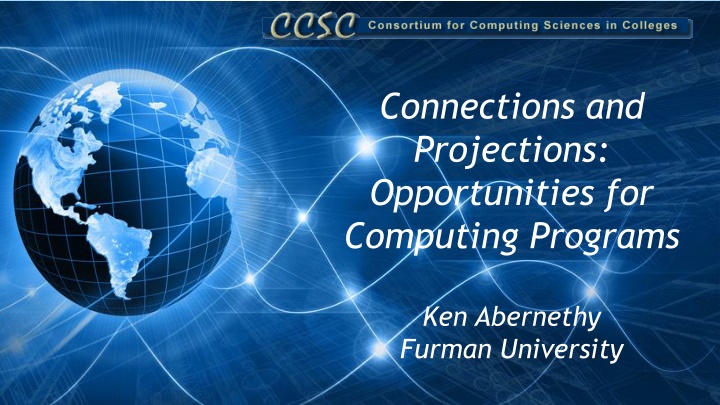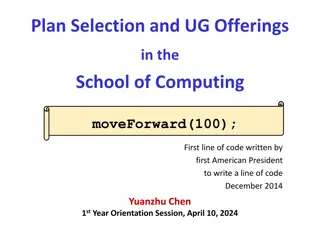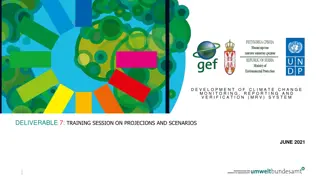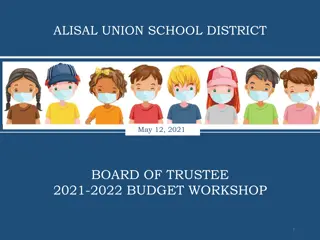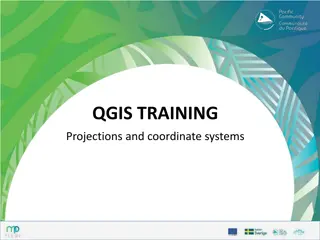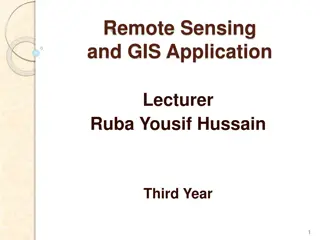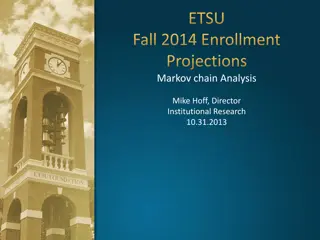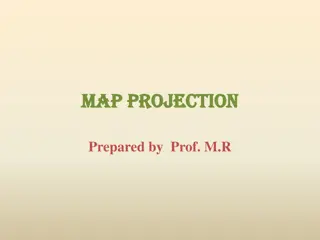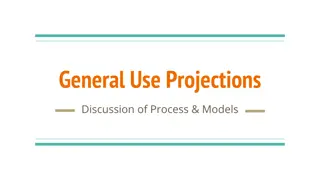Connections and Projections: Computing Programs Opportunity
"Explore the opportunities presented by connections and projections in computing programs, as discussed by Ken Abernethy from Furman University. Delve into the innovative concepts and potential advancements in this dynamic field."
Download Presentation

Please find below an Image/Link to download the presentation.
The content on the website is provided AS IS for your information and personal use only. It may not be sold, licensed, or shared on other websites without obtaining consent from the author.If you encounter any issues during the download, it is possible that the publisher has removed the file from their server.
You are allowed to download the files provided on this website for personal or commercial use, subject to the condition that they are used lawfully. All files are the property of their respective owners.
The content on the website is provided AS IS for your information and personal use only. It may not be sold, licensed, or shared on other websites without obtaining consent from the author.
E N D
Presentation Transcript
*Connections and Projections: Opportunities for Computing Programs Computing Programs Connections and Projections: Opportunities for Ken Abernethy Furman University Furman University Ken Abernethy Subtitle
Computing Connections Uses of computing technology are rapidly expanding Information Technology is revolutionizing almost every sector of our economy Job roles are increasingly diverse Programming is still central, but there are many other mission-critical jobs within the Computing workforce
A Few Example Job Titles Software Developer Web Developer Requirements/Systems Analyst Business Systems Analyst Internet Marketing Analyst Client/Account Manager Database Administrator Database Analyst Business Intelligence Analyst Information Security Analyst Security Director Network Architect Network Administrator IT Project Manager Test Designer Quality Assurance Specialist Mobile App Designer Software Support Technician IT Manager Software Solution Designer Systems Engineer User Support Specialist Customer Service Representative Training and Development Specialist IT Data Scientist Digital Strategist
Diversity of Jobs Requires Diversity of Skills https://datausa.io/profile/cip/110701/#skills
Diversity of Jobs Requires Diversity of Skills
Diversity of Jobs Requires Diversity of Skills
Jobs for Computing Workers Tech industry jobs encompass all the workers employed by tech companies, including positions that are technical, as well as all the supporting positions. Tech occupation jobs consists of the technology specialists employed by organizations ranging from hospitals and banks to retail stores and utilities. TECH INDUSTRY JOBS 6.9 million TECH OCCUPATION JOBS 7.3 million 49% of Tech Industry Jobs Are in Tech Occupations Source: CompTIA, Cyberstates 2017 Report (Computing Technology Industry Association)
Jobs for Computing Workers Tech Industry jobs encompass all the workers employed by tech companies, including positions that are technical, as well as all the supporting positions. Tech Occupation jobs consists of the technology specialists employed by organizations ranging from hospitals and banks to retail stores and utilities. TECH INDUSTRY JOBS 6.9 million TECH OCCUPATION JOBS 7.3 million 3.4 3.9 Note that there are more Tech Occupation jobs not in the Tech Industry than in the Tech industry. 49% of Tech Industry Jobs Are in Tech Occupations Source: CompTIA, Cyberstates 2017 Report
Total Jobs for Computing Workers Estimated number of self- employed and sole proprietor Tech Sector workers, including the growing number of gig workers. Estimated number of self- employed and sole proprietors classified as non-employer entities by the US BLS. TECH OCCUPATION JOBS 7.3 million Self- Self- Employed Tech Sector Workers 1.1 million Employed Tech Occupation Workers 950,000 Not the Whole Picture There are a number of non-tech firms engaged in what could be considered a tech initiative. Examples may include an automotive company engaged in IoT, a finance company selling AI-based analytics, or a retailer with a mobile app subsidiary. Unfortunately, there is not a great methodology for sizing the number of workers within these companies engaged in tech pursuits. Estimated estimate of the number of workers engaged in occupations where technology use is a critical component of the job. Knowledge workers use technology intensely, well beyond basic tasks such as checking email or browsing the web. Non-Tech Firms with a Presence in Technology ? Knowledge Workers 10-15 million In the aggregate, more than 25 million U.S. workers can probably be characterized as a Tech Sector, Tech Occupation, or Knowledge Worker. Roughly 1 in 5 of all US Workers! Source: CompTIA, Cyberstates 2017 Report
Tech Occupation Employment Trending Net job gains 2010-2016: 864,240 (about 13%) YoY Employment Growth % 7,000,000 +7.6% -0.1% Software (published) 6,000,000 Tech Manufacturing 5,000,000 +1.3% Telecommunications and Internet Services 4,000,000 +2.7% 3,000,000 Engineering Services, R&D, and Testing 2,000,000 +4.8% 1,000,000 IT Services and Custom Software Services 2010 2011 2012 2013 2014 2015 2016 Source: CompTIA, Cyberstates 2017 Report
Tech Occupation Employment vs. Other Sectors 2015 2016 6.7 6.9 6.46.6 5.75.8 4.64.7 millions 2.2 2.2 Tech Construction Finance & Transportation Arts, Entertainment, Insurance & Warehousing & Recreation Source: CompTIA, Cyberstates 2017 Report
Unemployment Rate by Occupations 2015 2016 5.3% 4.9% 2.6%2.5% US Computer Overall Occupations Source: CompTIA, Cyberstates 2017 Report
Tech Sector Wages 150,100 111,600 107,700 106,800 104,100 53,040 Tech Telecommunications Software IT Services and Custom Engineering Services US Overall Manufacturing & Internet Services (Packaged) Software Services R&D, and Testing AVERAGE ANNUAL WAGES Source: CompTIA, Cyberstates 2017 Report
Projections: Computing Job Growth US IT Occupations Employment Projections 2012 - 2022 Job openings due to Growth, 2012-22 1,015,900 Job openings due to replacements, 2012-22 1,338,300 Annual Education Output Needed: 235,420 per year Source: National Center for Educational Statistics Data and BLS
Supply/Demand Gap Projected Annual Need 2015 US Educational Output 235,000 Bachelors Computing Graduates Associates Computing Graduates Masters Computing Graduates 127,000 31,000 * 36,000 60,000 In addition, there are about 530,000 computing jobs currently open, based on National Center for Educational Statistics Data * Significant number of Masters graduates are already in workforce no reliable data found Source: National Center for Educational Statistics Data
Key Trend Projections in Computing The Tools of the Cloud Era Emerge IoT Transforms Physical Environments and Social Convention Data Teams Bridge the Gap Between IT and Business Security Gets Worse Before It Gets Better Skills Gap Grows in Scope and Nuance, Forcing Organizations to Rethink Workforce Strategies Source: CompTIA s IT Industry Outlook 2017
Key Trends in the Tech Sector and Tech Workforce The Tools of the Cloud Era Emerge CompTIA has described the evolution of IT in three stages: The mainframe era The PC/Internet era The cloud/mobile era Moving forward, new elements built from a cloud mindset will play larger roles. This may range from software-defined hyperconverged infrastructure to Blockchain and machine learning, adding new layers for technology interaction. Source: CompTIA s IT Industry Outlook 2017
Key Trends in the Tech Sector and Tech Workforce IoT Transforms Physical Environments and Social Convention Beyond the buzz and the backlash, the Internet of Things is primed to be a massive disruptor. As physical objects gain intelligence and connectivity, new opportunities will rise across all industries. Source: CompTIA s IT Industry Outlook 2017
Key Trends in the Tech Sector and Tech Workforce Data Teams Bridge the Gap Between IT and Business In A Functional IT Framework, CompTIA found four primary domains that form the overall IT function: Infrastructure Development Security Data Of these, data is currently the least likely to be handled by a standalone team. But that may change soon. As the demands on data grow (in both quantity and complexity), organizations will experiment with new approaches to harness the power of data. Source: CompTIA s IT Industry Outlook 2017
Key Trends in the Tech Sector and Tech Workforce Security Gets Worse Before It Gets Better A recent AT&T global survey uncovers some critical gaps in current cybersecurity strategy that, if left unchecked, could provide an open door to cybercriminals: Two-thirds of organizations say their in-house cybersecurity capabilities are adequate to protect against cyberthreats, yet nearly 80% say they have been breached within the past year Ponemon Institute estimates the average cost of a data breach in 2017 was $3.6 million Other studies show that a quarter or more of overall shareholder value may rely on a company s reputation, which can be heavily damaged by security breaches More than one-third (35%) of all the respondents to the AT&T survey a number that increases to nearly half (46%) for organizations in Asia-Pacific (APAC) say IoT devices were the primary source of a data breach experienced over the prior year Source: AT&T s Global State of Cybersecurity Survey 2017
Key Trends in the Tech Sector and Tech Workforce Skills Gap Grows in Scope and Nuance, Forcing Organizations to Rethink Workforce Strategies Given the breadth and pace of innovation, all signs point to a widening skills gap. This will put further pressure on organizations of all sizes to rethink their workforce strategies. Source: CompTIA s IT Industry Outlook 2017
Challenges and Opportunities Employers are challenged by: o Supply/demand gap in IT workers o Widening skills gap in IT workers Both these factors present great opportunities for computing educational programs
Responding to these Challenges Reassess our programs to make sure these are optimized for the needs of our economy going forward Are we emphasizing the appropriate skills? o Can we widen our net of potential students? o
Bridging the Skills Gap Do Our Programs Reflect These Findings? Traditionally Our Emphasis?
Skills Gap: Some Possible Curricular Responses Increase emphasis on synthesis thinking and problem solving by: Utilizing more case studies that focus on: Open Discussion The Business Context in which IT Operates Negotiation and Trade-offs Decision Analysis Provide more instruction, guidance, mentoring, and practice in: Analyzing Complex Problems (involving multiple domains) Technical Writing Creating and Delivering Effective Presentations Active Listening and Making Persuasive Arguments Create more (and more relevant) interdisciplinary classes/programs Offer classes/seminars that encourage the exploration of major future trends like: Increasing Importance of the Cloud The Expanding Role of the IoT Challenges (both Technical and Organizational) in Security The Emergence of Data as a Foundational Computing Objective The Rapidly Expanding Uses of AI and its Implications o o o o o o o
Bridging the Supply Gap Projected Annual Need 2015 US Educational Output 235,000 How Can We Attract More Students to Our Discipline? Bachelors Computing Graduates Associates Computing Graduates Masters Computing Graduates 127,000 31,000 * 36,000 60,000
Supply Gap: Some Possible Responses Help dispel the myth that the computing profession is equivalent to coding Help prospective students understand that there is much more to the computing profession than coding o Of course an understanding of coding is a foundational skill However, the Business Context in which IT operates requires a great many other skills as well Help prospective students become aware of the many different job titles that comprise the computing profession o Emphasize that this job diversity provides excellent career opportunities for people with the right sets of computing-related skills o Ensure that our curricula reflect our commitment to this diversity of computing-related skills o Create introductory courses that emphasize the diversity of jobs and skills needed within the computing workplace Make introductory programming classes accessible to those who will not make a career of writing code Offer flexible tracks within our programs that can accommodate interests in a variety of skills needed in the computing profession in addition to programming Resist the urge to view this as a dumbing down of our curricula, and instead think of it as a smarting up the curricula to better address the reality of the computing workplace and the urgent needs of the employers within that workplace o
Supply Gap: Some Possible Responses (contd) Do not be bashful about describing the extraordinary career possibilities in the computing profession and the urgent need for computing workers Help promote a wider view of our discipline by engaging in community outreach activities Seek ways to help increase awareness within middle school and high school students of the outstanding career opportunities in the computing profession o Help these students become aware of the many different job titles that comprise the computing profession o Promote the idea that this job diversity provides an array of excellent career opportunities for people with the right sets of computing-related skills o Partner with one or more computing professional groups (local or national) to help get this message out (see for example www.it-ology.org for some excellent ideas in this area).
Our Challenge: Expand Our View of the Computing Discipline!
